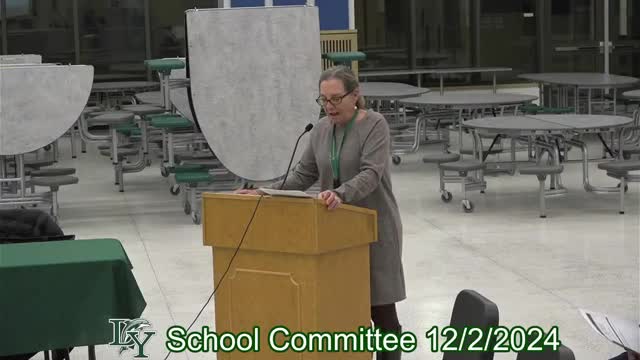Data reveals alarming trends in student math proficiency
December 02, 2024 | Dennis-Yarmouth Regional School District, School Boards, Massachusetts
This article was created by AI summarizing key points discussed. AI makes mistakes, so for full details and context, please refer to the video of the full meeting. Please report any errors so we can fix them. Report an error »

In a recent government meeting, officials presented a comprehensive analysis of student performance in mathematics across various grade levels, highlighting significant trends and challenges in meeting state standards. The focus was on key domains, including operations, algebraic thinking, and fractions, which are critical for students pursuing advanced mathematics and future career opportunities.
The data revealed a concerning pattern: across grades 3, 5, 7, 8, and 10, student proficiency consistently hovered around or below 50%. For instance, while third graders showed a slight improvement in 2024, their performance in operations and algebraic thinking remained just above the state average. In contrast, fifth graders exhibited fluctuating results, often falling below state averages in both operations and fractions.
As students progressed to middle school, the situation did not improve. Seventh graders maintained an average accuracy below 50%, with a widening gap from the state average noted in 2024. Eighth graders faced similar challenges, with their performance in the increasingly complex number systems domain also remaining below the 50% mark. The data indicated that as students advanced, particularly into algebra and functions, the difficulties persisted, with tenth graders showing no significant improvement and continuing to lag behind state averages.
The analysis underscored the ongoing struggle educators face in teaching these critical mathematical concepts, despite the implementation of various curricula, including Eureka Math Squared for grades K-5, Illustrative Mathematics for grades 6-8, and Carnegie for grades 9-11. The findings call for a reevaluation of teaching strategies and resources to better support student learning and address the evident gaps in mathematical understanding as students progress through their education.
The data revealed a concerning pattern: across grades 3, 5, 7, 8, and 10, student proficiency consistently hovered around or below 50%. For instance, while third graders showed a slight improvement in 2024, their performance in operations and algebraic thinking remained just above the state average. In contrast, fifth graders exhibited fluctuating results, often falling below state averages in both operations and fractions.
As students progressed to middle school, the situation did not improve. Seventh graders maintained an average accuracy below 50%, with a widening gap from the state average noted in 2024. Eighth graders faced similar challenges, with their performance in the increasingly complex number systems domain also remaining below the 50% mark. The data indicated that as students advanced, particularly into algebra and functions, the difficulties persisted, with tenth graders showing no significant improvement and continuing to lag behind state averages.
The analysis underscored the ongoing struggle educators face in teaching these critical mathematical concepts, despite the implementation of various curricula, including Eureka Math Squared for grades K-5, Illustrative Mathematics for grades 6-8, and Carnegie for grades 9-11. The findings call for a reevaluation of teaching strategies and resources to better support student learning and address the evident gaps in mathematical understanding as students progress through their education.
View full meeting
This article is based on a recent meeting—watch the full video and explore the complete transcript for deeper insights into the discussion.
View full meeting
